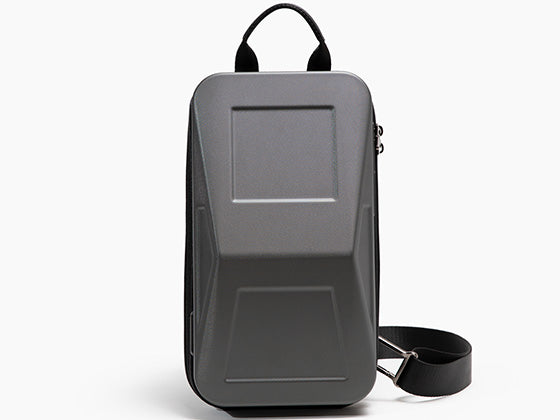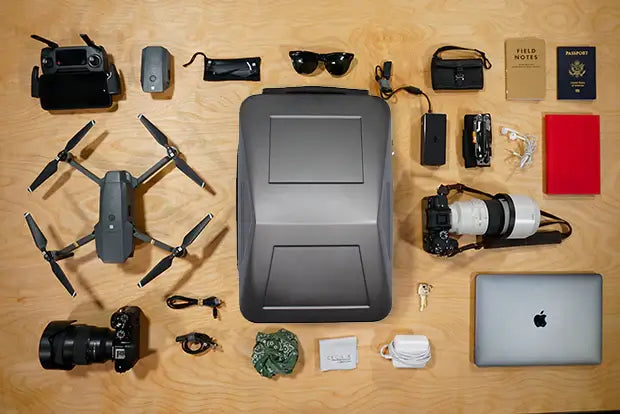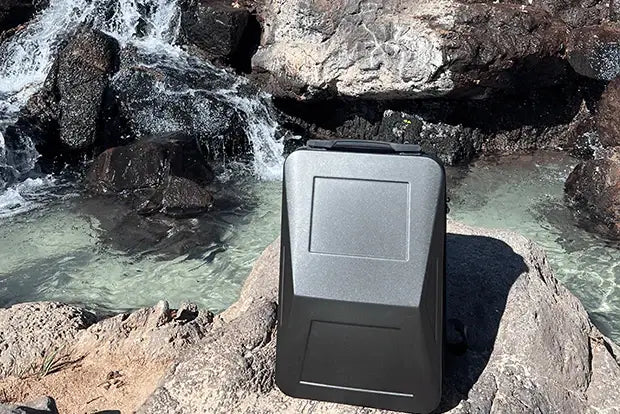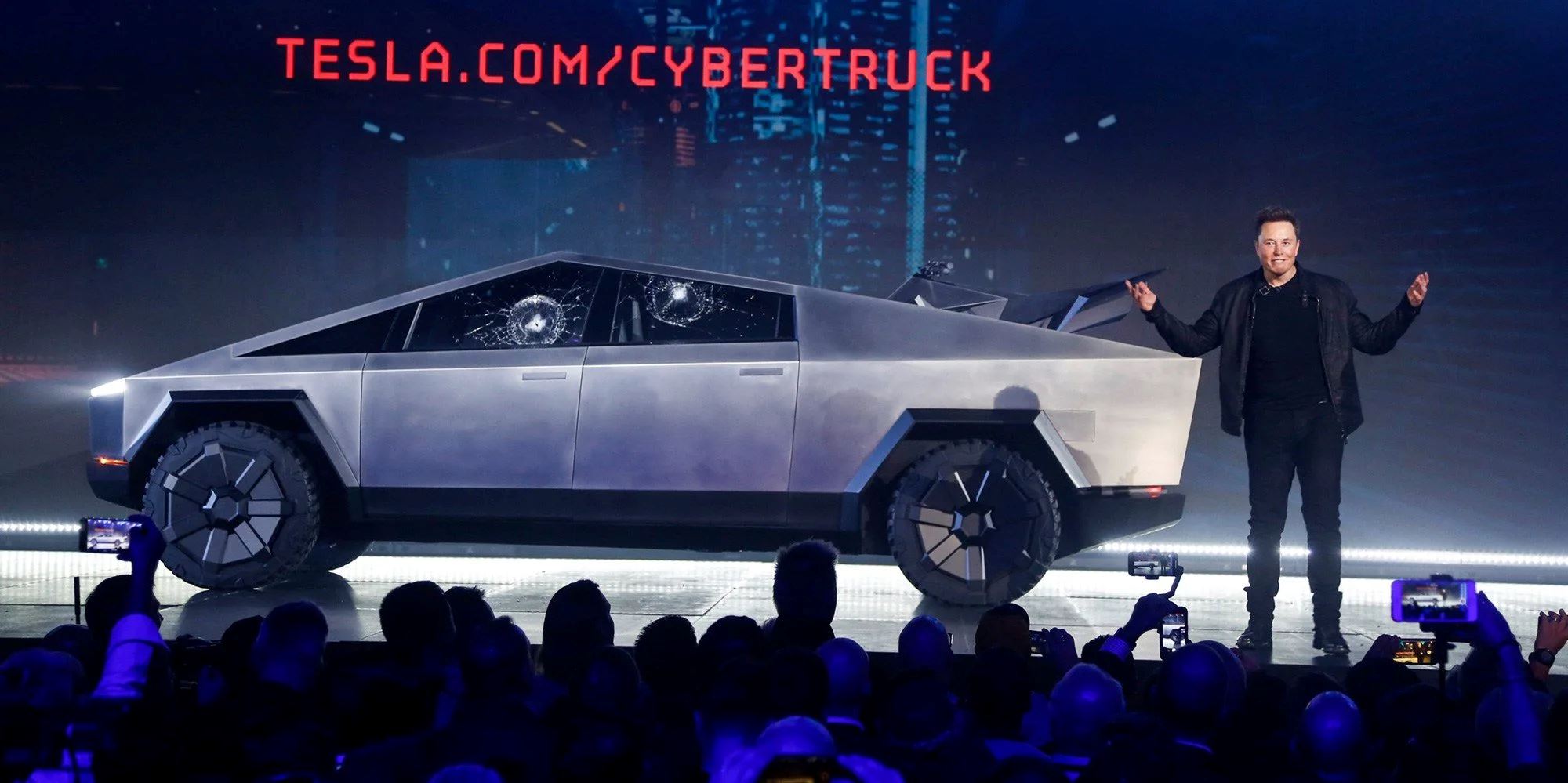It's hard for anything to be universally praised. All things have their supporters and detractors. Tipping that scale in the right direction decides if something is either successful or a future case study for people to learn from.
The Cybertruck’s design is nothing like anything we have seen before outside of science fiction. Some people might say that it's a low-poly automobile straight out of an old video game. But maybe we can all agree that Tesla must have put some thought into this unusual design. Here we have attempted to include many factors that inspired the design of the Cybertruck.
First, let’s dive into the design of the Tesla Cybertruck. The most striking aspect of this vehicle is its exterior, which is made from ultra-hard stainless steel alloy. This material is resistant to dents, scratches, and even bullets, making it perfect for off-road adventures and rugged work environments.
The Tesla Cybertruck also features a distinctive triangular shape, with sharp angles and sharp lines. This design not only sets it apart from other pickup trucks, but it also helps to improve its aerodynamics and reduce drag. As a result, the Tesla Cybertruck has a 0-60 mph time of just 2.9 seconds, making it one of the fastest trucks on the road.
The Need to Stand Out

If we start off with a little history lesson, pickup truck design has not been refreshed over the past 100 years. Yes, you heard that right. One hundred years. There hasn't been a big design redesign in a long time, except for minor curves or add-ons enabled by improvements in other industries. Ford F series pickups lead the pickup market. Can you guess what their competitors look like? Yes, the exact same.
This is a problem with any industry, especially industrial design, where profits matter more than being inventive. You’d be hard pressed to pitch something fresh and have it go into production. Companies try to model their products off on the success of others, which leads to a stagnant and unimaginative market.
Consumers have had to make their peace with this monotony by internalizing abstracts like “brand loyalty” when they go to buy a truck. Looks are rarely ever a factor anymore. Sadly, people do not expect innovation. And this is why people stick to Ford’s pickups, there is nothing different available.
Now, let's say you're Tesla and you're ready to compete in the 81 billion USD pickup truck industry, which is saturated with vehicles that look extremely similar. I believe the answer is obvious: you must bring in an automobile that is unlike any other.
Merging Cyberpunk with Pickup Trucks
The Cybertruck captivated us as soon as it was initially showcased. It drew a lot of attention for its uncompromising brutalist design. The word Brutalism is derived from the French phrase "béton brut," which means "rough concrete."
Brutalism emerged in Sweden in the late 1940s, was adopted by young English architects, and was completely realized by Swiss-French architect Le Corbusier, who coined the term. While the name relates to the usage of raw concrete, it may also apply to any material displayed for its raw beauty, including steel.
But another clear aesthetic quality is the designer's inspiration being taken from the Cyberpunk genre. We've always been drawn to cyberpunk because of its raw and gritty look, as well as its futuristic settings. It is easily identified owing to its dark, metallic, and bright colors, as well as strong geometric patterns and straight lines.
Despite how bizarre it appeared to us at first, we quickly realized how fascinated we were by this pickup truck and stealth fighter jet hybrid that had an outrun aesthetic. We weren't the only ones appreciating the design. The Cybertruck's popularity appears to have divided society, with 52 percent of US Twitter users disliking the vehicle and 48 percent adoring it.
It's reminiscent of Blade Runner, Total Recall, and Back to the Future all at once. Elon Musk has referred to his vehicle as the "Blade Runner truck" on many occasions, according to Forbes. Its raw, unfiltered, and unpolished brutalism really speaks to genre enthusiasts. Finally, an EV that looks like it is from the year 2020!
The Cybertruck’s material and frame
For the chassis, they used Ultra-Hard 30X Cold-Rolled Stainless-Steel in its raw form, and they opted to create the automobile with an exoskeleton rather than the typical body-on-frame. In other words, an exoskeleton signifies that the body and the frame are one and the same, as opposed to a body-on-frame, in which the body is a distinct element installed on a frame.
This type of frame structure shines by leaving more room inside the EV, allowing it to store battery packs and other equipment with ease. Another added benefit is that it avoids dents and long-term corrosion. The overall lesser manufacturing, less assembly, and no paint jobs involved in producing the Cybertruck makes the process more environmentally friendly, which gives Tesla more brownie points.
But what about the interior of the Tesla Cybertruck? The cabin is spacious and comfortable, with plenty of room for passengers and cargo. The seats are made from vegan leather and the dashboard is sleek and modern, with a large touchscreen display that provides access to all of the vehicle’s features and controls.
Not Just for Show
The body's design, in our opinion, was greatly influenced by two crucial factors: a desperate urge to stand out and a desperate need to be cost-effective in production. These two limits imply a straightforward solution: a radical design that can be mass-produced affordably.
The basic plate-like form, where the material can be stamped using a machine, is a huge cost-cutting benefit. Also, as Elon Musk verified in one of his tweets, the ultra-hard 30x steel is incredibly difficult to press, much alone bend. However, to guarantee that the flat portions do not buckle under compression, they must be thicker, which increases the total weight of the EV.
The necessity to counteract this weight is what has resulted in the car's pointed top end, which appears to be stressing everyone out. When studying structures and force distributions in physics, one of the most common things we learn is that triangles are excellent load and tension distributors in any system. This is also the core concept underlying this design.
The top pointed end is one corner of the triangle, and one side of the triangle is the windshield section, the other leads to the rear end, and the other side is the truck's foundation. Truss bridges are the most common use of the triangular distribution of forces around us in the physical world on a broad scale.
In terms of technology, the Tesla Cybertruck is packed with features. It has a 360-degree camera system that provides a bird’s-eye view of the vehicle, making it easy to maneuver in tight spaces and navigate off-road trails. It also has a “Tesla Sentry Mode” that can detect potential threats and alert the driver, and a “Tesla Dog Mode” that keeps the cabin comfortable for pets.
Our Closing Thoughts
The design is a textbook case of "form follows function." And it is obviously a significant bonus for everyone. A design revamp was desperately required. Since its debut, the design has only grown on people. Could it have been done differently? Sure.
However, the practicalities described above convinced us that this specific design is not only unique but also well-thought-out. The futuristic style has been fully embraced, from the outside to the inside, and even in the marketing strategy – which we think is a terrific choice. We can never be certain if it will be a commercial success or not. However, the Cybertruck is a classic case of a design disruptor, and it has done so admirably.
The Cybertruck is Tesla's most eccentric vehicle to date. By proposing this design, which draws inspiration from pop culture artifacts with gloomy and dystopian visions of the future, the company is essentially presenting a very bleak or exciting image of tomorrow's society depending on how you look at it.
Instead of another circular, sleek, and streamlined automobile, Musk is proposing a sharp and very aggressive design that is intended to frighten rather than reassure. Prior to the Cybertruck's unveiling, Tesla's vision of the future could have been portrayed as a Jetsons-style paradise, but now we're quite sure Musk had Mad Max with wicked AI overlords in mind all along.











